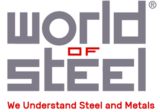Aerosol Cans
Aerosol containers
The aerosol container has been a recognised form of packaging since it was first introduced during World War II as a heavy gauge dispenser designed to withstand low pressure.Since then, it has undergone many modifications in design and construction and its use is constantly increasing at an annual rate of 3 to 5% world-wide (production of roughly 10 billion units in 1996/1997) to pack a wide range of products, including personal care, household, automotive, industrial, paints and varnish, pharmaceutical and recently food products.
Metal is the predominant material used in the manufacturing of aerosol containers and steel for packaging (tinplate and electrolytic chromium coated steel) has by far the greatest share of the market world-wide.
The standard steel aerosol container is a 3-piece can, with diameters varying from 45 to 65mm. It offers a range of internal pressure resistance from 12 to 18 bars with the advantage that the can body does not need to be changed no matter what the pressure is.Indeed, only the cone and/or the dome have to be modified when pressure specifications vary.The thickness of the steel for packaging used for aerosol applications ranges from 0.18 to 0.23 mm for the body and from 0.26 to 0.36 mm for the end components. Tin coating weight is most usually E 2.8/2.8.
The tinplate base of the aerosol container has a concave profile to increase its pressure resistance and safety requirements for internal pressure resistance up to 18 bars imply that pressures at least twice these must be withstood in testing. After the curl has been lined with sealing compound and cured, it is double seamed in place in the usual manner.
Constant technical developments have helped in improving the technical performance and appearance of the welded seam of the 3-piece steel aerosol can body.Indeed, today the electrical welding process is constantly being used, which allows printing closer to the seam.Moreover, the use of powder coatings applied internally on the side-stripe area of the welded can protect the inner face of the weld seam from highly corrosive products.
The top section of the aerosol container is a much more complex shape and its production may involve as many as seven successive tooling stages in a transfer feed press, starting from a flat steel disc. The disc is first drawn to a dome shape, then re-drawn in a more complex profile, pierced at the centre, “blocked and guttered”, trimmed to restore exact circularity, curled at the top edge and finally curled at the bottom edge, for attaching to the body in a double seam.The tops are lined and cured before being attached to the body. After leak testing, the containers are palletised for despatch to the filler. Contents are inserted through the top aperture and a valve cup, also usually in tinplate, is swaged in position to complete the closure.
Butane/propane is today the standard propellant used in aerosol containers.There are various ways of inserting the propellant, by injection into the completed can through the valve system or by inserting the propellant through the aperture just before swaging on the valve cup (as refrigerated propellant or after creating a vacuum in the container).
Recent years have seen many technical and technological developments in steel aerosol can manufacturing, and among these major changes are the following:
The 38mm diameter 2-piece steel aerosol can, consisting of a welded body and dome, opens the market of small size aerosol applications to steel cans.This was made possible by the development of a new process enabling welding of the body of narrow steel cans electrically. Moreover, the coneless aerosol can required the development of an ultrasonic necking process which allows standard aerosol valves to be used.
The 2-piece steel aerosol can uses the DWI technique, which means a can body without seam.Together with economic benefits which mainly result from material weight gain of about 20% , this product offers a number of interesting characteristics, such as an environment friendly can, its richly coloured decoration provided by a 360° rotation dry offset press with six prints.
This new aerosol container is expected to widen the use of steel aerosols in the personal care segment where the appearance of aluminium aerosol cans had prevailed so far Finally, the shaped aerosol steel cans offer brand differentiation.
The use of aerosol containers to dispense food products such as cream topping, has been slow to develop. Either a completely non-toxic propellant must be used, or the foodstuff must be enclosed in a sealed pouch within the container, the propellant being located outside the pouch.
- Source: The International Tin Association (formerly ITRI Ltd)
